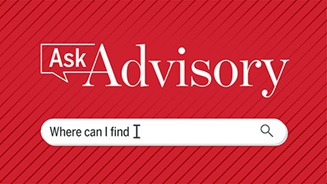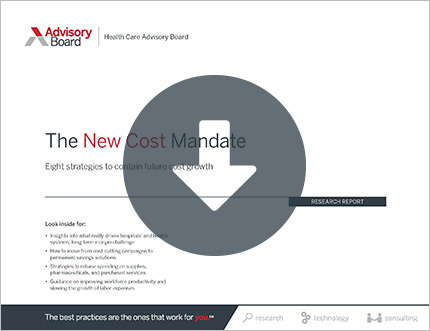It has been well documented that U.S. health care spending outpaces other countries, but experts say the reason why could be attributed to the U.S. health system's complexity and resulting administrative costs, Austin Frakt writes for the New York Times' "The Upshot."
Download the Cost Control Playbook for our 3-pronged strategy for cost reduction
Research highlights high administrative costs
According to "The Upshot," available research on health administration costs suggests, "Like the overall cost of the U.S. health system, its administrative cost alone is No. 1 in the world."
For example, a 2014 study published in Health Affairs found that between 2010 and 2011 U.S. hospital administrative costs exceeded such costs in Canada, England, France, Germany, Netherlands, Scotland, and Wales. In the United States, the study found hospital administrative costs accounted for 25.3% of total U.S. hospital spending, followed by 20% of hospital spending in the Netherlands. According to the study, Canada and Scotland ranked the lowest, with hospital administrative costs accounting for about 12% of each country's total hospital expenditures, "The Upshot" reports.
But that study only looks at a piece of the U.S. health care system. According to "The Upshot," only one study has examined administrative costs for the entire U.S. health care system. The 2003 study, published in the New England Journal of Medicine, estimated that administration costs accounted for 30% of U.S. health care expenditures in 1999—which was nearly twice the share of Canada's administrative-related health care expenditures.
If the estimate holds true today, that means $5,700 of the $19,000 that U.S. workers and employers pay on average for family coverage goes toward administrative health care costs, "The Upshot" reports.
Why are US administrative costs so high?
9 best practices for sharing prices with patients
According to the "Upshot," research shows the U.S. health system's reliance on multiple payers contributes to administrative health care costs.
"A typical hospital has to contend not just with several public health programs, like Medicare and Medicaid, but also with many private insurers, each with its own set of procedures and forms (whether electronic or paper) for billing and collecting payment," "The Upshot" reports.
For instance, researchers from Harvard University and Duke University examined billing-related costs in the United States and found that billing functions accounted for:
- 25% of revenue from emergency department visits;
- 15% of revenue from primary care visits—or approximately $100,000 per year per primary care provider; and
- 3% of revenue for surgical procedures.
High administrative spending is not unique to hospitals, "The Upshot" reports. A 2009 study published in Health Affairs found that physicians spent about three hours per week addressing billing-related matters, and for each physician, medical support workers spent an additional 19 hours per week on billing-related matters. The researchers also found that administrators spent a total of 36 hours per week on billing-related matters. Overall, the time spent on billing-related matters cost an additional $68,000 per year per physician in 2006, the study concluded.
A 2014 study estimated that, overall, 80% of U.S. billing-related costs in health are a result of the complexity of billing and collecting payments from several payers in the U.S. health care system, "The Upshot" reports. Further, research suggests health care costs related to billing are rising. Elsa Pearson, a policy analyst with Boston University School of Public Health, conducted a literature review and found billing-related costs increased from 2009 to 2012, increasing from 14% of total health expenditures in 2009 to 17% of total health expenditures in 2012.
In addition, Harvard health economist Michael Chernew said, "As patients are required to pay more money out of pocket" for their care, providers also have to "devote more resources to collecting it." Chernew used data from AthenaHealth to determine the share of physician bills paid by patients within one year, and found that while over 90% of bills under $75 were paid within a year, that percentage dropped to 67% for bills over $200.
Experts weigh in
Kevin Schulman, a co-author of the Harvard/Duke study and a professor of medicine at Duke University, said, "The extraordinary costs we see are not because of administrative slack or because health care leaders don't try to economize. The high administrative costs are functions of the system's complexity."
According to "The Upshot," "A distinguishing feature of the American health system is that it offers a lot of choice, including among health plans," but "[b]ecause insurers and public programs have not coordinated on a set of standards for pricing, billing, and collection—whatever the benefits of choice—one of the consequences is high administrative burden."
But Barak Richman, a law professor at Duke who also co-authored the study, said that does not have to be the case. "One can have choice without costly complexity," he said, explaining, "Switzerland and Germany … have lower administrative costs than the U.S. but exhibit a robust choice of health insurers" (Frakt, "The Upshot," New York Times, 7/16; Baker, "Vitals," Axios, 7/17; Gooch, Becker's Hospital CFO Report, 7/16).
Download the Cost Control Playbook for our 3-pronged strategy for cost reduction
Feeling pressure to maintain margin performance and secure financial sustainability? You’re not alone. Providers of all sizes, locations, types, and patient/payer mixes report a substantive decrease in operating margins and budget turmoil. While margins are still relatively healthy (between 2.5% and 3.0%), costs are quickly outgrowing revenue.
That’s why we’ve created the Cost Control Playbook—a one-stop destination for system-wide cost control strategies.
Don't miss out on the latest Advisory Board insights
Create your free account to access 1 resource, including the latest research and webinars.
Want access without creating an account?
You have 1 free members-only resource remaining this month.
1 free members-only resources remaining
1 free members-only resources remaining
You've reached your limit of free insights
Become a member to access all of Advisory Board's resources, events, and experts
Never miss out on the latest innovative health care content tailored to you.
Benefits include:
You've reached your limit of free insights
Become a member to access all of Advisory Board's resources, events, and experts
Never miss out on the latest innovative health care content tailored to you.
Benefits include:
This content is available through your Curated Research partnership with Advisory Board. Click on ‘view this resource’ to read the full piece
Email ask@advisory.com to learn more
Click on ‘Become a Member’ to learn about the benefits of a Full-Access partnership with Advisory Board
Never miss out on the latest innovative health care content tailored to you.



